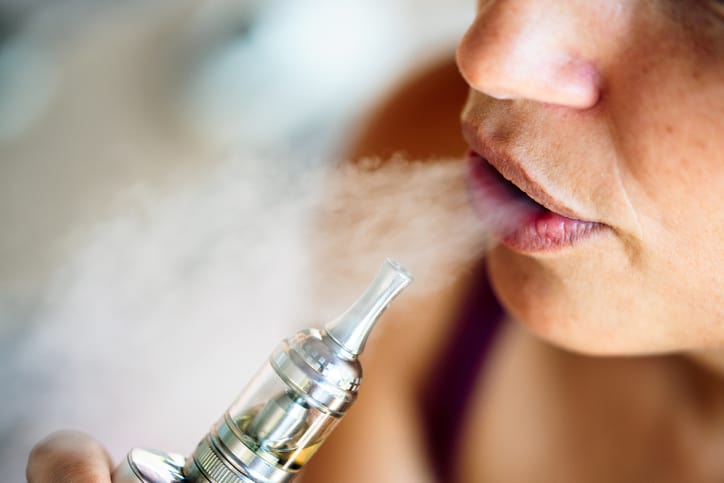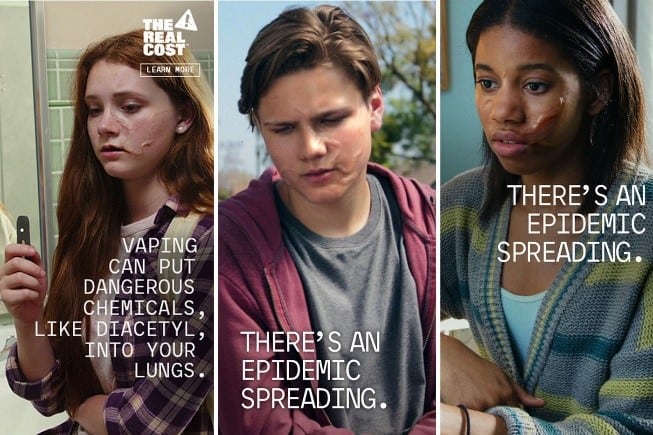Perverse Psychology: How Anti-Vaping Campaigns Backfired

Photo Credit: Getty
 We have spent years and countless billions trying to deal with the supposed epidemic of youth vaping. It has only gotten worse. Yet, almost nobody in public health or government seems to be asking why.
We have spent years and countless billions trying to deal with the supposed epidemic of youth vaping. It has only gotten worse. Yet, almost nobody in public health or government seems to be asking why.
In my new study out today, Perverse Psychology, I investigate why teen vaping suddenly began skyrocketing in 2018, after years of dramatic declines, massive anti-vaping messaging campaigns by governments and health groups, and increased regulatory scrutiny and pressure. The conclusion my paper comes to is not that youth vaping increased in spite of anti-vaping efforts; it increased because of those efforts.
First, youth vaping is not now and has never been an “epidemic.” Based on the Center for Disease Control and Preventions’s (CDC) own definition, an epidemic is a sudden increase in disease. Vaping is a behavior, not a disease. And with regard to nicotine vapor products, there is not a single disease yet associated with the behavior.
Furthermore, youth vaping—though perhaps worthy of attention—is not as common as people may think. Most adolescents have never vaped (81.4 percent), few reported vaping at least one in the last month (13.8 percent), and fewer reported vaping six or more times in a month (3.6 to 6.8 percent).
More importantly, of youth who vaped habitually, approximately 99.5 percent already used tobacco—primarily cigarettes—prior to vaping.
On top of that, it isn’t clear that youth who report “vaping” are vaping nicotine products at all. Research points to the possibility that many are actually using vaping devices and e-cigarettes to vape cannabis.
This is not an epidemic.
Yet, it is concerning that after a 30 percent decline between 2016 and 2017, the number of students who reported experimenting with vaping suddenly spiked in 2018 and has continued to rise. What change might have compelled youth in larger numbers to give vaping a try?
The most recent National Youth Tobacco Survey (compiled annually by the CDC) sheds some light on a possible answer. Unlike in previous years, the 2019 survey asked middle and high schoolstudents why they vaped and the number one reason they gave, by far, was curiosity.
Interestingly, the United Kingdom—which maintains a vibrant nicotine vapor market— had a completely different experience. The government encourages adult smokers to switch to nicotine vaping, and adult vaping has increased, but youth vaping remains low.
This is not because British teens are so different from their American counterparts. Surveys in the UK show that teens who did report vaping cite the same reason: curiosity. So, the question should be: what is happening in the U.S. that isn’t in the UK that might explain youth’s sudden increased curiosity in vaping?
Anti-tobacco groups like to blame Juul, e-cigarette flavors, and industry advertising. But, as my new study demonstrates, none of this adequately explains what has occurred over the last three or four years.
During this time, Juul’s popularity has certainly grown, but flavor options have dwindled as companies curtailed advertising and deleted social media accounts. City and state governments across the country also began implementing e-cigarette taxes and bans on indoor vaping. In 2016, federal law officially prohibited the sale of e-cigarettes to anyone under 18 years old, and by 2017 five states and D.C. prohibited e-cigarette sales to anyone under 21 years old. At the same time, state and local health agencies, along with health charities like the Truth Initiative and the Campaign for Tobacco-Free Kids, launched massive anti-vaping media campaigns aimed at convincing teens not to vape.
A key difference between the U.S. and U.K. is how the two approached messaging. Authorities in the U.K. has embraced e-cigarettes as a life-saving alternative to smoking and continues to promote their use among adult smokers to reduce harms associated with combustible tobacco. In the U.S., however, campaigners focused almost exclusively on youth, sought to paint e-cigarettes as no different from smoking, and stressed the possible, but as-yet unknown risks of e-cigarettes rather than their relative lower risk compared to smoking.

Figure 1 Public Health England Advertisement

Figure 2: U.S. Food and Drug Advertisement
As early as Figure 1: U.S. Food and Drug Advertisement2015, anti-tobacco programs in the U.S. pivoted to anti-vaping campaigns. By then, the CDC, Food and Drug Administration (FDA), Campaign for Tobacco-Free Kids, Truth Initiative, and dozens of local health departments had already dedicated billions toward marketing their anti-vaping messages at teens.
Whatever their intent, the message these campaigns unwittingly sent was that vaping was rebellious, risky, and cool. They showed images of young people vaping, featured descriptions of tasty-sounding flavors, described how teens hid their vaping from parents and teachers, and even had actors talk about how all their friends vaped and how those who didn’t were seen as outsiders.
Had these messages come only from the FDA or other authority figure, teens might have dismissed them. But the media uncritically parroted these talking points and elevated the idea of a youth vaping “epidemic” to dogma. The message teens got was that vaping was a no-no even if all their friends were doing it. If you’ve ever raised a teenager, you probably see why this approach backfired so spectacularly.
As my paper details, developmental psychologists long have known that telling teenagers something is for adults only, dangerous, and that they shouldn’t do it is a sure fire way to pique their interest. Adolescents highly value independence at a time when they have less of it than they’d like. So, threats to the little freedom they do have can cause a “boomerang” effect, compelling them to reclaim a sense of autonomy by doing the opposite of what they’re told, just to prove they can.
Federal agencies, health departments, and charities have used the supposed “epidemic” to boost funding for their campaigns. These campaigns may have successfully convinced policy makers holding the purse strings and adults of the dangers of vaping, and resulted in strict anti-vaping laws spreading across the country, but it has utterly failed to reduce youth experimentation with vaping.
Ironically, the failure of these campaigns has only spurred calls for stricter laws and more funding—an outcome that will only make the problem worse.
Giving the anti-vaping propaganda machine in the U.S. more money will not solve the youth vaping issue, insomuch that it exists. If we truly want to dissuade non-smoking youth from experimenting with e-cigarettes, we ought to emulate the approach taken by the U.K.; provide the public of all ages with accurate, non- sensationalized information about e-cigarettes; and focus efforts on getting adult smokers—half of whom will die as a result of their habit—to switch to lower-risk alternatives.
If we should have learned anything by now, it’s that prohibitions, whether legal or cultural, do not stop people from engaging in risky behavior. And, in the case of teenagers, it may actually make the risky behavior more attractive.